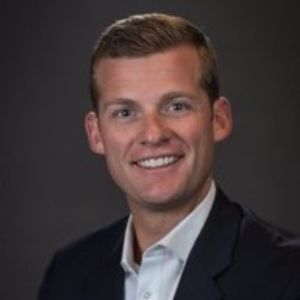Community responsibility
If the government investigated your nonprofit organization to determine if it deserved its tax-exempt status, how would you react? What evidence could you provide? The need for nonprofits to enhance—and document—their social accountability programs is greater than ever. Sen. Charles Grassley (R-Iowa), chairman of the Senate Finance Committee, has begun investigating how not-for-profits conduct their business and whether they deserve their tax-exempt status. Grassley is currently investigating hospitals, but he has expressed interest in analyzing this difference in long-term care.
If Grassley believes the difference is negligible or nonexistent, nonprofit long-term care organizations could be required to pay property taxes and other fees despite their work in the community. In April, Larry Minnix, president/CEO of the American Association of Homes and Services for the Aging (AAHSA), penned a letter to nonprofits on their responsibility to their communities (see “Doing Good and Doing Well,” p. 60). While these facilities fulfill this responsibility by providing charity within their communities and in their greater communities, they may be required to prove this to investigators in the future.
What Is Social Accountability?
According to AAHSA, “Social accountability is a measure of an organization's commitment to its mission, its stakeholders, and society. It is also a process for planning, budgeting, reporting, and evaluating these community benefits.” Kay Kallander, senior vice-president of strategic planning at American Baptist Homes of the West (ABHOW), says that this responsibility “brings value to the communities in which we work.” Based in Pleasanton, California, ABHOW has 30 communities throughout California, Washington, and Arizona. “We want to be focused on enhancing these communi-ties and towns beyond just our own business pro forma,” she adds.
Wesley Towers, in Hutchinson, Kansas, follows the same philosophy. “I believe that social accountability means being transparent and demonstrating this to our community and stakeholders,” says Ray Vernon, president/CEO of Wesley Towers. “We provide services to elders beyond what the public would normally want to do and fund. We provide a quality of life for our residents that appreciates and recognizes their important contributions to our community, state, and nation.” Wesley Towers advocates long-term care by training others and being active in the field, and it promotes quality and excellence in service to seniors.
Fulfilling Community Needs
Social responsibility has always been a part of ABHOW's culture, and several years ago the organization began tracking, articulating, and sharing its efforts. “But I would be remiss if I gave any impression that our predecessors were not attentive to this, as well,” Kallander explains. “We're just doing an extended job of capturing this information.”
Wesley Towers has had an ongoing formal philosophy to highlight its partnership and citizenship to its stakeholders since 1999. “Our first demonstration of this was to the Hutchinson City Council,” Vernon says. “At that time (and it still somewhat exists today) there was a perception that not-for-profit retirement communities catered to the wealthy and provided little social benefit. Our goal then, as today, was to demonstrate that we do serve those in need and provide many social and community benefits worthy of our 501(c) designation and tax exemptions.”
Both ABHOW and Wesley Towers provide an essential responsibility that is common among nonprofits: They provide charitable care to residents who are unable to pay. “If a resident in an ABHOW community runs out of funds,” Kallander notes, “he or she is never asked to leave and is given all the care needed.” At Wesley Towers, no resident has ever had to leave the facility because of an inability to pay for care or services.
Long-term care organizations are also major employers in their communities and make important economic contributions to those communities. “It is our philosophy,” Vernon says, “to share our facilities and resources as much as possible without jeopardizing the needs of our residents.” Each ABHOW community develops programs that meet the needs of its particular location.
To contribute to its external community, a nonprofit organization can:
Provide training, education, and employment opportunities for healthcare professionals throughout the community.
Offer scholarships to employees for nursing, management, and certification programs.
Provide local, state, and national leadership from management in the interest of issues that affect older Americans, such as healthcare, housing, and wellness.
Serve as a polling place for local, state, and national elections.
Invite local public agencies to visit and voice their needs.
Reach into the community by providing meeting space and free clinic services.
Extend transportation services using facility buses.
Set up a hotline for seniors to call for resources or information.
Operate a Meals On Wheels program.
Knit caps for premature babies in neonatal intensive care units.
Tracking Accountability
Providing charitable services to the community is one part of social responsibility; the other is tallying that contribution and relaying it to stakeholders. “The hardest thing is to track it,” Kallander explains. “You all are probably doing it, you're just not tracking it.” An organization should assess its social accountability progress in time and/or dollars. ABHOW estimates the dollar value of each hour a volunteer contributes, based on each volunteer's duties, using an online calculator (one such calculator is available at https://www.pointsoflight.org/resources/research/calculator.cfm). But the organization also focuses on how its presence can enhance a community. “We believe we're a benefit to these towns both in dollars and in time and treasure,” Kallander says. “That's a great thing to have, not only for the positive, but for a potential assault on the not-for-profit status.”
ABHOW publishes a yearly report consisting of data collected from all 30 communities. The annual report features financial information and graphs, as well as a narrative section documenting the programs each community has that fulfill its social responsibility. That report is presented to residents, board members, and employees. Next year, ABHOW plans to develop a written social accountability policy and post the social accountability report on the organization's Web site. “People can visit, read the report, and get ideas,” Kallander says.
Wesley Towers also publishes a yearly statement highlighting its contributions in the Hutchinson News and to the city of Hutchinson. The report includes the organization's mission statement, examples of benefits provided, and a message to the community. It states, “Wesley Towers is proud of its not-for-profit status and its ability to contribute to the growth and viability of the Hutchinson community. Wesley Towers appreciates the opportunity to serve the Hutchinson community.”
Recommendations
Vernon advises organizations to be accessible, which he credits for Wesley Towers' positive perception in the community. “I think this openness has helped the public and government agencies understand and appreciate us more—especially our residents and staff,” he notes. Kallander suggests organizations bring in key townspeople—social workers, hospital discharge staff, fire department officials, and clergy—and ask them, “What is it that you see that we're missing in our community?” She recommends implementing one or two of the community's suggestions and managing the community's expectations so your organization doesn't disappoint.
Once an organization identifies and implements a social responsibility program, it can track its contributions and share that information both internally and externally. If an organization's 501(c)(3) status were ever challenged, it has evidence of its community contributions. “The main point, though, is that you do this because it's the right thing to do,” Kallander says. “If you do it with just the intent of being able to prove something, you missed the core of what social responsibility is all about.”
For more information on American Baptist Homes of the West, phone (800) 222-2469 or visit https://www.abhow.com. For more information on Wesley Towers, phone (888) 663-9175 or visit https://www.wesleytowers.com.
I Advance Senior Care is the industry-leading source for practical, in-depth, business-building, and resident care information for owners, executives, administrators, and directors of nursing at assisted living communities, skilled nursing facilities, post-acute facilities, and continuing care retirement communities. The I Advance Senior Care editorial team and industry experts provide market analysis, strategic direction, policy commentary, clinical best-practices, business management, and technology breakthroughs.
I Advance Senior Care is part of the Institute for the Advancement of Senior Care and published by Plain-English Health Care.
Related Articles
Topics: Articles , Finance











